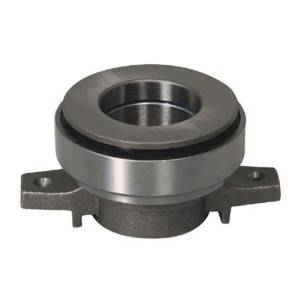Cluth Bearing
Working Principle
When the clutch release bearing is working, the force of the clutch pedal will be transmitted to the clutch release bearing. The clutch bearing moves toward the center of the clutch pressure plate, so that the pressure plate is pushed away from the clutch plate, separating the clutch plate from the flywheel. When the clutch pedal is released, the spring pressure in the pressure plate will push the pressure plate forward, pressing it against the clutch plate, separating the clutch plate and the clutch bearing, and complete a working cycle.
Effect
The clutch release bearing is installed between the clutch and the transmission. The release bearing seat is loosely sleeved on the tubular extension of the first shaft bearing cover of the transmission. The shoulder of the release bearing is always against the release fork through the return spring and retracted to the final position , Keep a gap of about 3~4mm with the end of the separation lever (separation finger).
Since the clutch pressure plate, the release lever and the engine crankshaft operate synchronously, and the release fork can only move axially along the output shaft of the clutch, it is obviously impossible to directly use the release fork to dial the release lever. The release bearing can make the release lever rotate side by side. The output shaft of the clutch moves axially, which ensures that the clutch can engage smoothly, disengage softly, reduce wear, and extend the service life of the clutch and the entire drive train.
Performance
The clutch release bearing should move flexibly without sharp noise or jamming. Its axial clearance should not exceed 0.60mm, and the wear of the inner race should not exceed 0.30mm.
Attention
1) In accordance with the operating regulations, avoid the clutch half-engaged and half-disengaged state and reduce the number of times the clutch is used.
2) Pay attention to maintenance. Use the steaming method to soak the butter during regular or annual inspection and maintenance to make it have sufficient lubricant.
3) Pay attention to leveling the clutch release lever to ensure that the elastic force of the return spring meets the requirements.
4) Adjust the free stroke to meet the requirements (30-40mm) to prevent the free stroke from being too large or too small.
5) Minimize the number of joining and separation, and reduce the impact load.
6) Step on lightly and easily to make it join and separate smoothly.





